Can you explain what is the difference between axial modes and tangential issues means? Also, what are oblique modes and why are those not reported? We can and have updated this blog to reflect changes in our experience and thinking on 12/4/19.
When we interject energy into a box, your room, from speakers, instruments, vocals, I don’t care what the source is, banging on a pot, it doesn’t matter. When you interject energy into a room, some of that energy will fit, some of it will not. It’s all frequency-dependent. Longer waves, lower frequency energy mostly won’t fit in today’s small rooms. When that happens it produces high and low-pressure areas within the room. We don’t need to go into why let’s just work from that point forward.
Room Modes: https://en.wikipedia.org/wiki/Room_modes
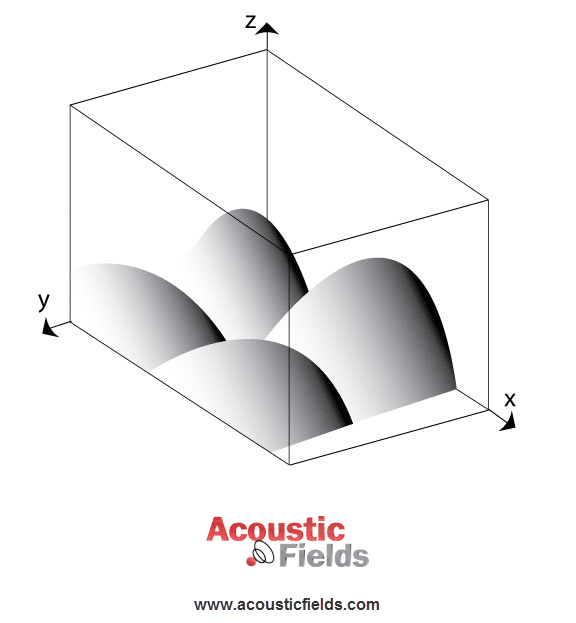
Pressure Modes
That pressure between two walls, two parallel surfaces is called axial modes. Now, it could be a front and rear wall, it can be both sidewalls it can be floor and ceiling. So there are three sets of pairs, if you will, of parallel walls. We have front and rear walls, we have four front, rear, and sidewalls. We have a floor to ceiling dimension. All of these three dimensions, the ceiling is the smallest thus producing the highest number of low-frequency issues. These low-frequency issues are spread out throughout the whole room since the ceiling covers the entire width and length of the room.
The Difference Between Axial And Tangential Modes
Tangential modes are four walls, so we have four walls where the pressure is not fitting. Four areas off of those four surfaces where the pressure is not fitting. Where are those pressure areas in the room? All through the room. If you’ve got a lot of tangential modes in your room, then you have pressure areas between four walls, they’re not working. With oblique modes, we have all six surface areas of the room to deal with. The oblique modes are the smallest issue when it comes to all three modes. Axial modes are the strongest of the three.
Well, how many walls do you have in your room? Six, two sides, front and rear, floor and ceiling, let’s call the floor a wall. So we have six (plains) if you will in the room and with tangential modes we have four of those (plains) that the pressures are high and low and sound is not fitting. Tangential modes, even though they’re only half as strong as axial modes, are really problematic in middle and high frequencies, so you have to be very careful with those.
Oblique Modes Explained
Oblique is the sixth, just adding in that the two more surfaces, so it’s the six surfaces where sound energy is not fitting. We don’t really look at oblique modes because they’re never really that much of an issue and their amplitude is not that great, that we worry about them. We look at them in most of the analysis that I do, we just focus on the two and four wall scenarios because those are the most problematic. Once you get those issues resolved, the oblique modes tend to fall into place after that.
Axial Modes
Let’s work with those first, the two most powerful, and get those as under control and managed as best we can first, and then the six surface modals issues we can deal with if there are any left after we treat the axial and tangential. In small rooms, we must treat the low-frequency axial modes first and foremost. They are the strongest and can be + 10 dB – + 15 dB over baseline or flat. We must use powerful low-frequency absorption treatment technologies to treat these issues. We must use Diaphragmatic absorption.
Diaphragmatic Absorption
Diaphragmatic absorbers per square foot absorb the most energy of any other type of low-frequency absorption. A diaphragmatic absorber is a rigid cabinet that has a diaphragm that moves in response to sound pressure. The front wall vibrates in response to sound pressure. The energy then enters the inside of the cabinet and is slowed down by the front wall. Inside the cabinet is our carbon technology which acts as a large sound absorber which takes the slowed-down energy from the front wall and absorbs even more of it.
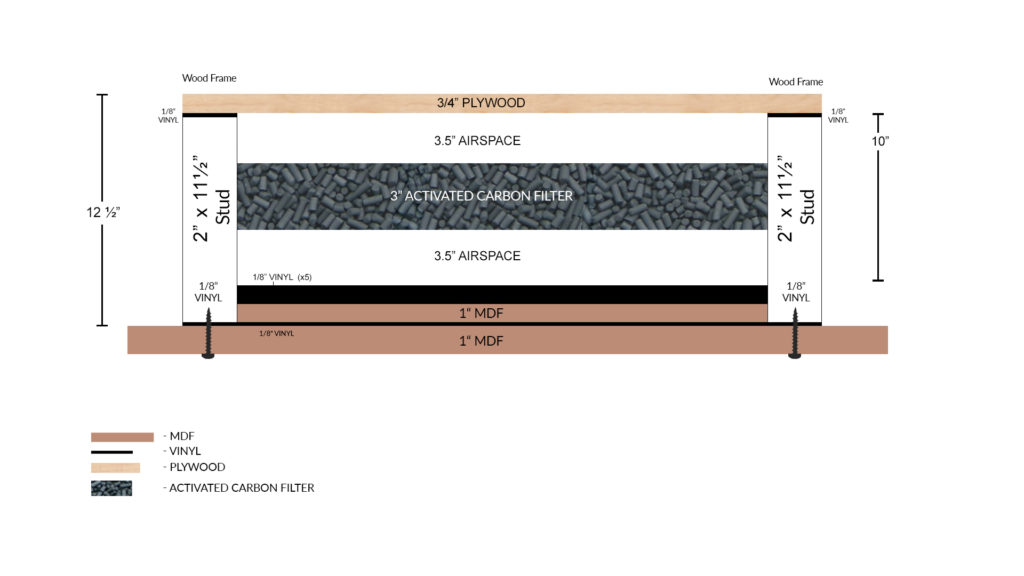
Acoustic Fields Absorber Wall Barrier
Process
Once you have designed your room by first choosing the correct dimensions and matching those dimensions to your usage, you must then treat the low-frequency issues within the room. The most powerful treatment type to use is diaphragmatic absorption. It goes lower in frequency and absorbs at a much higher rate than any other technology type. You must determine what wall surfaces are causing what frequency and amplitude issues and then assign the correct type and amount of treatment.
Diaphragmatic Absorption:https://www.acousticfields.com/product-category/sound-absorption/acda-series/
Learn More About Us At Acoustic Fields: https://www.acousticfields.com/about/
In Summary
If you would like to learn more about room acoustics please sign up for my free videos and ebook by joining the mailing list here. I send room tuning tips and things for you to test in your room every Wednesday. They are easy to follow and will really help you enjoy more of your music.
Thanks and speak soon
Dennis



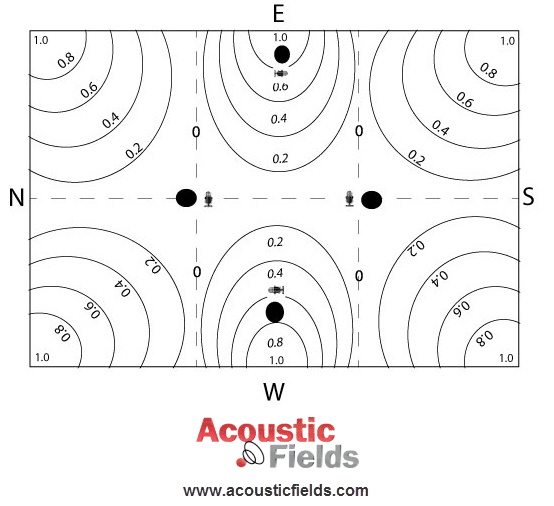
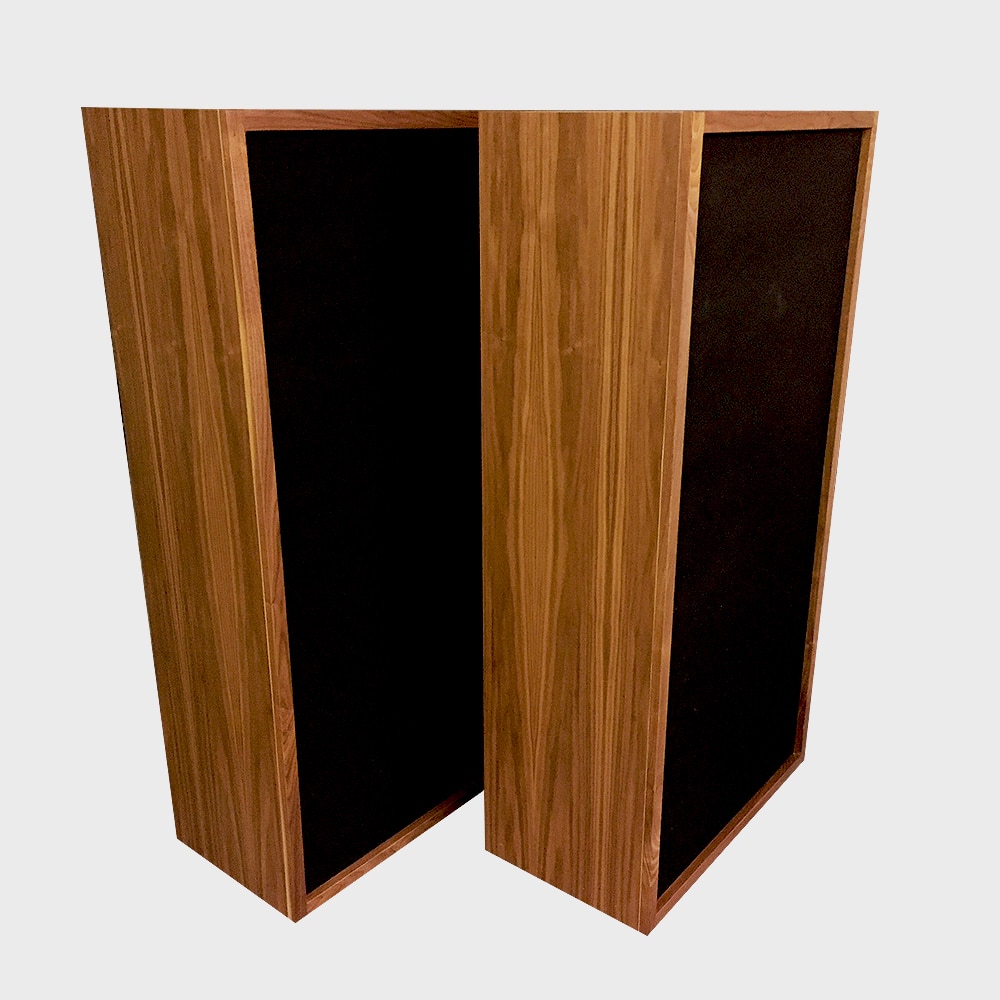


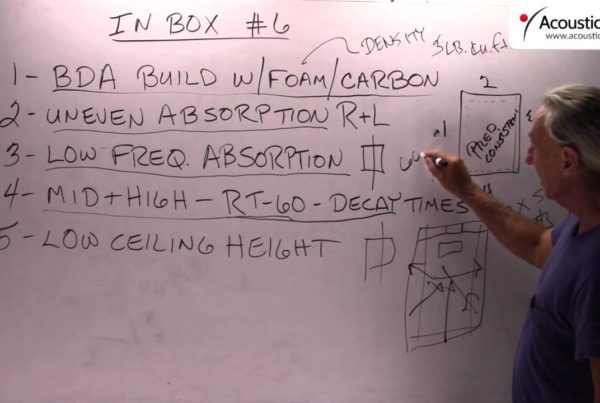
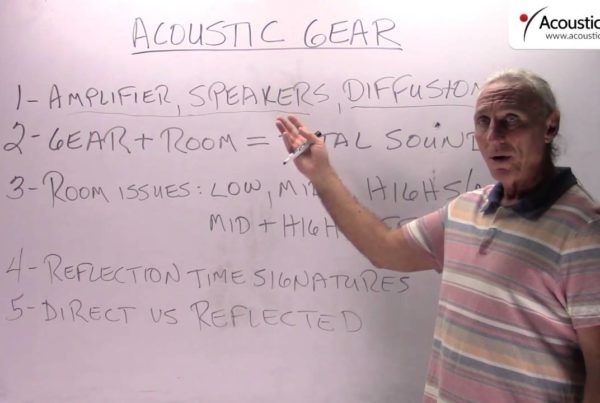


Thanks, Sir! I really like your clear explanation. Could you please tell me about what actually “mode” is? I’ve searched it in so much references but I never really understand what mode actually is. Thank you :)
A room mode is both heard and felt. If the modal energy is below 80 Hz. you are feeling the unwanted pressure areas through your bones. If the modal energy is above 80 cycles, you are hearing the air moving because the length of the frequency does not fit within the room’s dimensions. Wavelengths of energy that can not fit into room size dimensions cause the air between those dimensions to vibrate. It is this air movement that is producing the modal energy that is either heard or felt.